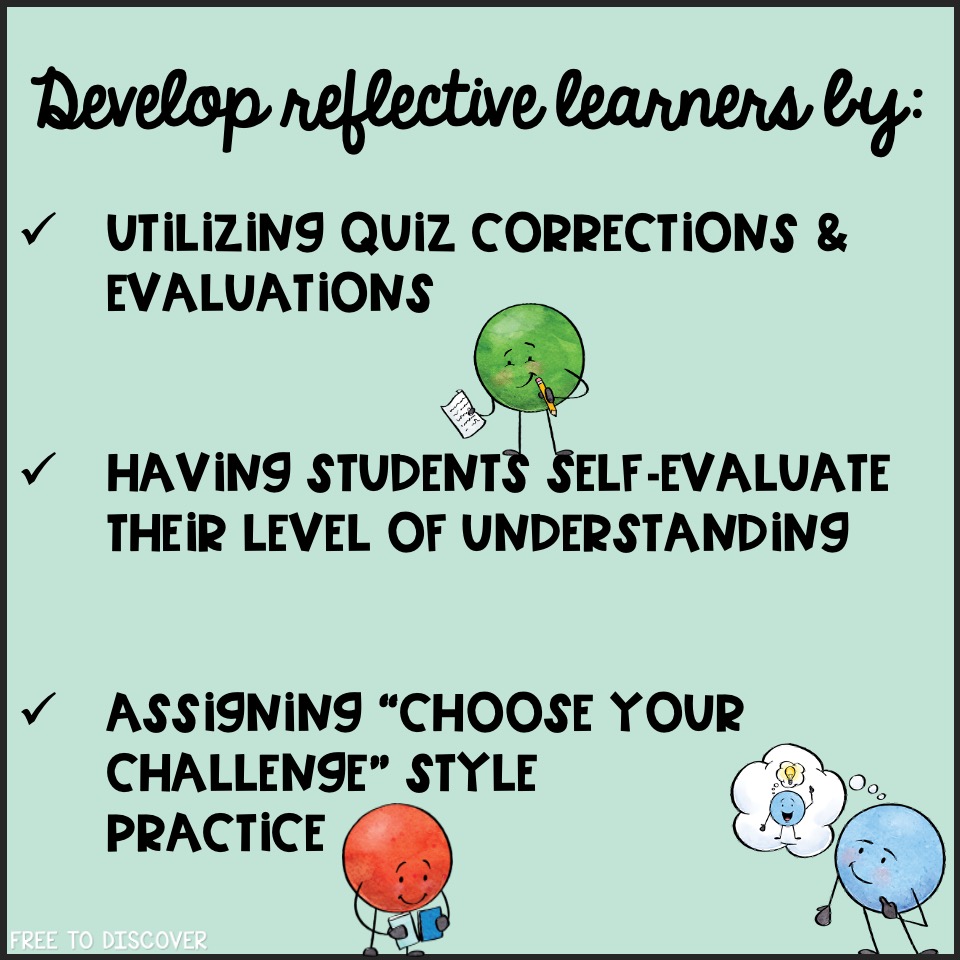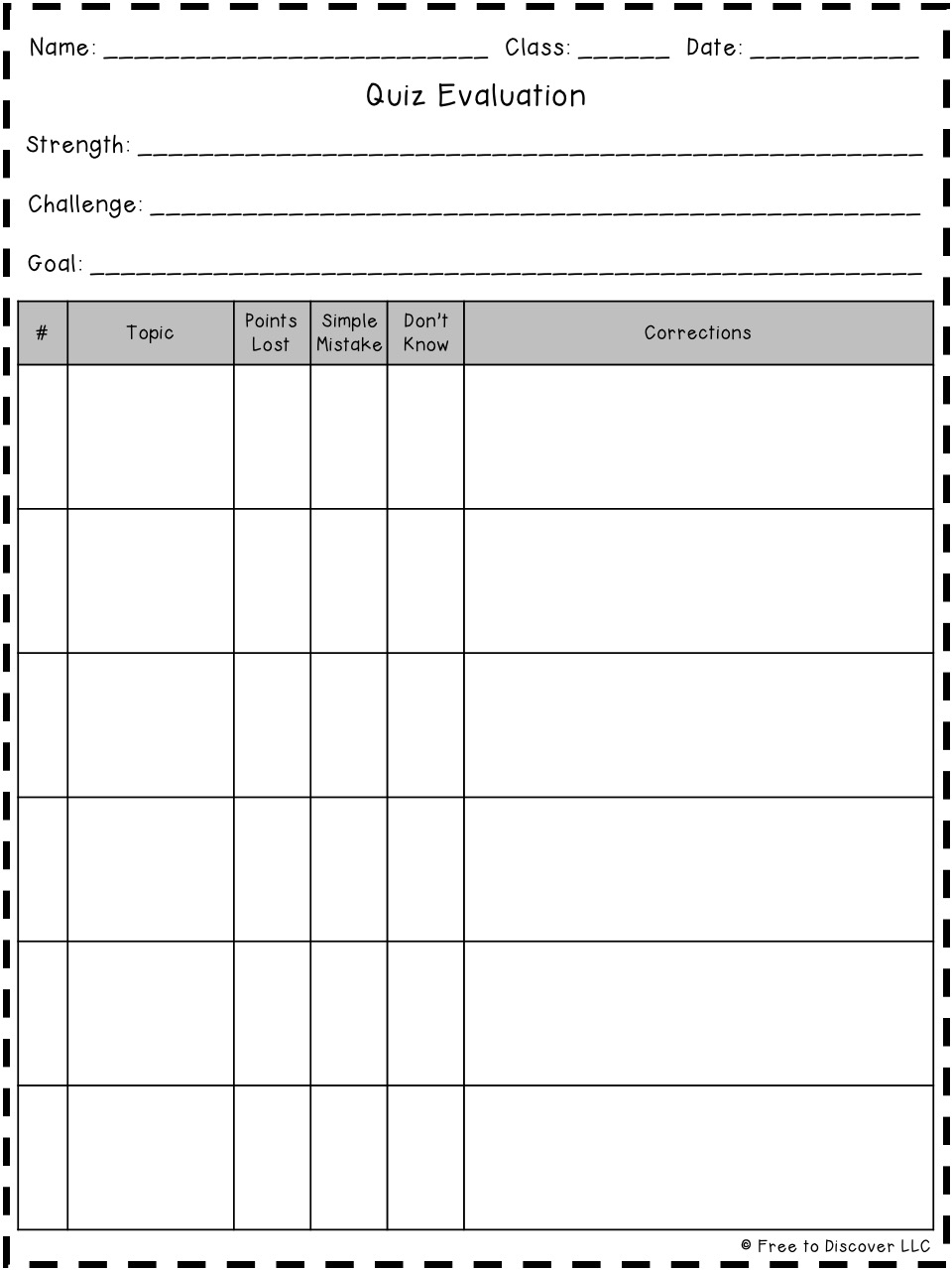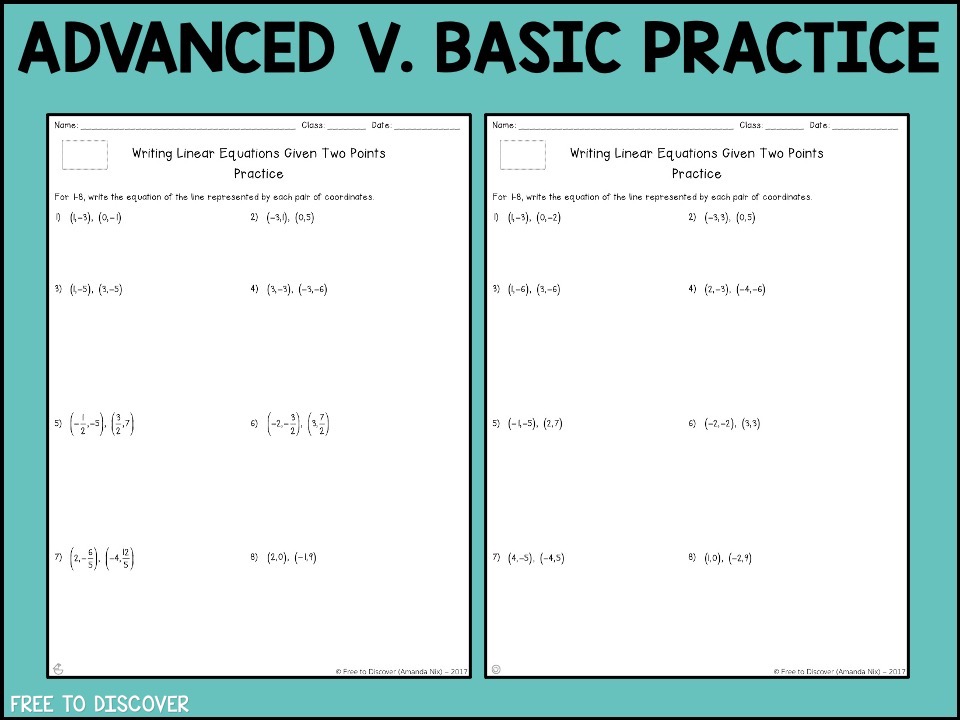
Developing Reflective Learners in Math
When I first started teaching, I would see students get back their quiz, look at their score, maybe flip it over to see where they lost points, then slide it into their folder - perhaps never to look at it again. I knew I had to do something to help my students to learn to be more reflective about their progress. I wanted my students to take ownership of their work and learn from their mistakes. They seemed to be missing the whole point that the quiz was a check-in tool intended to identify misconceptions, build understanding, and master content by the end of the unit. Since those early days, I have developed strategies to train my secondary math students to be more reflective learners. In this post, I will share three specific actionable strategies that you can try in your own classroom right away.
Students evaluate and correct quizzes.
After each quiz, students fill out an evaluation and complete corrections on the problems where they lost points. On the evaluation, students identify a strength and challenge from their quiz. (I stopped using the word weakness a long time ago. Challenges can be overcome!) The strength and challenge can be a particular concept or a general skill like checking over work or studying. Then students set a goal for their next formative assessment or the unit test. They pinpoint what they want to achieve and describe how they are going to get there.
Once students have reflected on their overall achievement, they focus on the details of the quiz. For each question where they lost points, they fill in a chart with the problem number, topic, and number of points lost. Then they check off whether it was a simple error or something they didn't understand. Finally, they make the necessary corrections by fixing their own work, checking their notes for a refresher, collaborating with a peer, or seeking help from the teacher. In some cases, a simple sentence may be appropriate in lieu of mathematical corrections.
This process is totally worth the effort! Once you've trained your students on the process, it will become a normal routine and habit. Ready to try it? Get your free copy of the Quiz Evaluation here.
Students reflect on their level of understanding.
As teachers, we are constantly evaluating our students' knowledge. We ask questions, give exit tickets, use mini-whiteboards, listen to discussions, etc. It's just as important that our students are assessing their own knowledge and understanding of math concepts. One way that I encourage this practice is to ask students to quickly rate and share their level of understanding with me using hand signals. I pause during a transition in the lesson and ask students to rate their confidence with the concept from 5-1. Holding up 5 fingers represents a strong understanding of the topic and 1 finger represents feeling completely lost.
This strategy is multi-purpose. It's a great opportunity for students to assess themselves and reflect on their understanding. They are also able to deliver a quick, silent message to me, indicating how they are feeling about the new skill. As the teacher, with a quick scan around the room I can quickly see if I can move on, whether I should readdress a topic, which students I may need to check-in as small remediation group, or who may require differentiated challenging practice.
Another variation of this is thumbs up, down, or sideways. In this strategy, students are still assessing themselves, but in a more general way. It's also a great way to check to refocus students' attention to the lesson.

Students choose their challenge for practice.
When differentiating for my secondary math students, I often provide two levels of practice that I refer to as Choose Your Challenge. Students cast their selection based on their level of comfort with the material we are practicing that day. One level is typically aligned to what we have been doing in class, and the second level is a bit more challenging for those students who are ready to extend their understanding of the topic.
I know what you might be thinking right now. What if students do not correctly self-select their assignment? Are any students even going to take on the challenge? What if the wrong students take on the challenge? Slow down those pesky thoughts, friend. Let me tell you about how I've personally utilized Choose Your Challenge.
First, appropriately set the stage for your students. Explain that some topics will come more easily than others for them. Different students will feel confident at different times. It's important that each student challenge himself or herself at the level that is maximizing their personal learning.
Then, I let students choose. Occasionally there are students who could take on the challenge but don't. That's okay! But it's a good idea to acknowledge that you know they could handle it to provide a little boost in their math confidence. Maybe next time they'll feel empowered to choose differently! There will also be students who take on the challenge but probably aren't ready for it yet. Monitor and support. Praise the student for embracing the challenge. Encourage them to transition to the other assignment partway through to get a bit of practice at each level.
Thank you for checking out this blog post! Be sure to download your free Quiz Evaluation!
Join the Free to Discover community!
When you subscribe, you'll access Issue 1 of our monthly newsletter for secondary math students!



